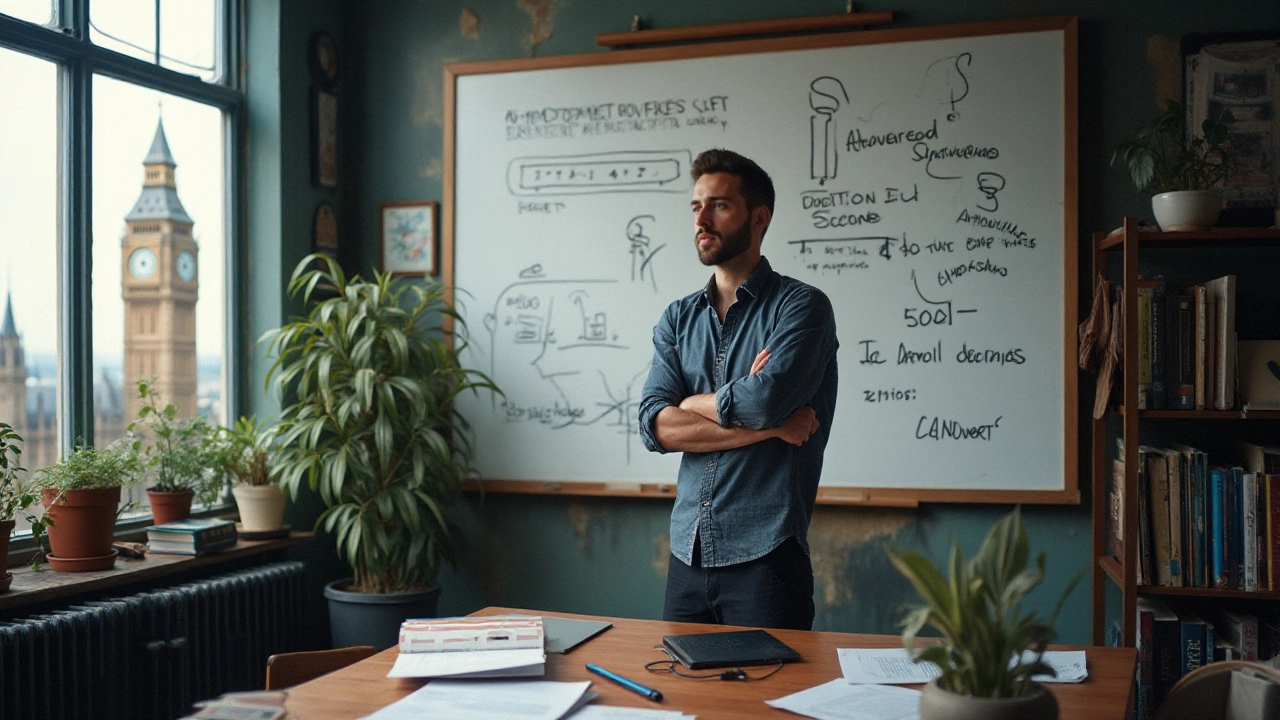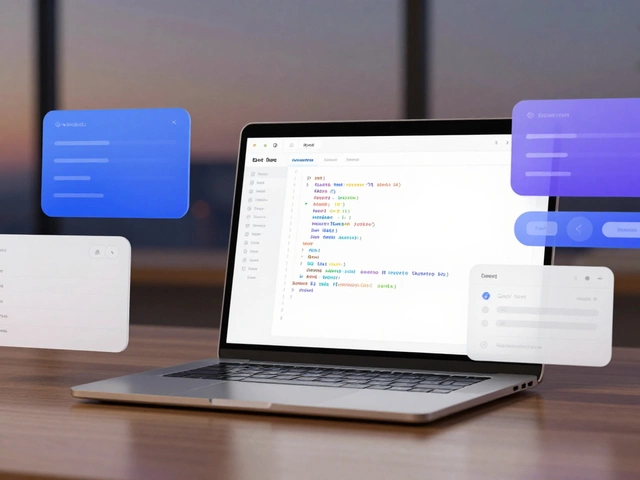In the realm of digital landscapes, search engine optimization is often heralded as a crucial element for getting noticed online. Yet, as web developers, recognizing when to skip SEO is equally important. Not every situation warrants fine-tuned SEO strategies, and sometimes, forgoing them could lead to better outcomes.
SEO might seem like a straightforward path to enhance visibility, but there are times when it conflicts with other goals. For instance, prioritizing user experience over algorithms can lead to more genuine engagement. Additionally, when creative freedom or unique design elements are at risk, it's wise to tread carefully.
Exploring these scenarios doesn't mean abandoning SEO entirely but rather highlights the importance of balancing technical optimization with innovative web development. Let's dive into those special moments when stepping away from conventional SEO might just be the game-changer you need.
- Understanding the Limits of SEO
- User Experience Over Search Engines
- Crafting Unique Content Without SEO
- Technical Constraints and SEO
- When SEO Can Compromise Creativity
Understanding the Limits of SEO
The image of SEO as a cure-all for web visibility can be misleading. While it’s true that SEO plays a significant part in driving traffic, it's vital to recognize its limitations. SEO isn't a magic wand that will instantly place any website at the top of search results. Sometimes, its effect is gradual, demanding a great deal of strategic planning and ongoing efforts before any substantial visibility is achieved. The algorithms driving search engines are sophisticated and change frequently, making the SEO landscape somewhat unpredictable and challenging to navigate confidently.
Search engines are constantly refining how they rank websites. This means that SEO rules and practices today might not be applicable tomorrow. Google alone adjusts its search algorithms numerous times a year, which can often lead to previously optimized pages losing their high ranks unexpectedly. Because of this volatility, relying solely on SEO can be risky. Developers need to be agile, ready to adapt strategies at a moment's notice, which isn't always feasible, particularly for smaller teams or individual developers who might not have the resources to keep pace with those changes.
Moreover, SEO at its core requires content to be crafted in a manner that delights both users and search engines—an often tricky balance to strike. Emphasizing user experience sometimes opposes SEO tactics because what might please a visitor could conflict with what an algorithm favors. Web developers often face a quandary when creativity meets SEO restrictions. For instance, a beautifully designed single-page site might serve the user magnificently but struggles with SEO due to its fewer number of keywords and resource areas. It's advisable to assess if the SEO effort will genuinely benefit your site compared to focusing purely on the visitor's experience.
One notable dilemma is the risk of falling into 'SEO traps,' where quality and unique content is sacrificed for keyword stuffing, leading to a lower quality of information. This is where understanding and knowing SEO's limitations is indispensable. Famous marketer Seth Godin once noted,
"Repeat business or behavior can be bribed. Loyalty has to be earned."This quote reminds us that enduring success comes from engaging content rather than only chasing top search positions.
Confined budgets and limited technical capabilities can also limit the use of extensive SEO strategies. Smaller businesses might find it more cost-effective to engage with audiences through social media platforms or community forums, rather than investing heavily in complex SEO strategies. Different strategies can prove more suitable than the exhaustive task of continuous SEO optimization for each page and post. Additionally, there is no one-size-fits-all approach to SEO; what works for a large e-commerce site may not work for a personal blog or an independent artist's portfolio. The effectiveness of SEO varies greatly depending on the nature and scope of a website.
User Experience Over Search Engines
In the bustling world of web development, it's easy to get caught up in the allure of search engine optimization. After all, who doesn’t want their website to gleam on that coveted first page of search results? However, there are moments when honing in on user experience can not only pay off in terms of user satisfaction but also bring long-term value to a site. At the heart of any exceptional web experience is a focus on how people interact with and enjoy the content. Real humans visit websites, not algorithms, and crafting an intuitive and engaging site is sometimes better than pure SEO tactics.
Consider this: a website with flawless SEO might bring in visitors, but if navigating the site feels like wandering through a labyrinth, those users won't stick around. Instead, investing in user-friendly design elements can drastically improve how visitors perceive and use a site. There's growing evidence to support this—and it’s not just anecdotal. Countless studies have indicated that an enhanced user interface can reduce bounce rates significantly. In a surprising 2019 study, it was found that a better user experience can lead to an up to 400% increase in conversion rates.
Moreover, paying attention to user experience often involves creating fluid navigation, meaningful content, and visuals that capture attention without being overwhelming. It's about crafting an environment where users spend time because they find what they need effortlessly. According to Nielsen Norman Group, users leave web pages within 10-20 seconds unless there is a clear value proposition to hold their interest. Here, having site performance strategies can be key—such as fast loading times and mobile responsiveness, which are crucial elements that often align with user experience more than strict SEO protocols. Implementing such features maintains visitor interest and encourages users to explore deeper into the content.
With that in mind, it's also essential to address the design influences driven by aesthetic enjoyment. Websites designed with the user in mind not only have broad appeal but can foster a more dynamic interaction. For instance, the application of color psychology within web design can evoke emotions that engage users more deeply. Harvard Business Review once conveyed that emotionally engaging customers can increase the levels of recommendation by 25%. Such strategies speak to the emotional intelligence required in crafting user experiences, which can ultimately trump traditional SEO approaches.
In summary, while SEO is an invaluable tool in the development arsenal, it's not the be-all and end-all. Developers should wear the lens of a visitor, step back, and assess a site's usability and engagement metrics with sincerity. Creating a balance where user experience takes precedence over relentless SEO strategies can foster genuine connections and translate into a robust reputation that search engines might eventually recognize naturally.

Crafting Unique Content Without SEO
Creating content that stands out without leaning heavily on SEO can sometimes be the key to building a truly engaging and loyal audience. When focusing on this approach, think about what makes your voice distinct and how it resonates with your readers. This could mean diving into storytelling that captures the imagination or offering insights that others haven't touched upon yet. Unique content often becomes a magnet for users because it offers a fresh perspective that can't be found elsewhere. In the digital age, readers crave authenticity, and being true to your narrative can set you apart, naturally attracting those who value what you bring to the table.
Instead of optimizing for search engines, think about optimizing for people. Consider what questions your audience might have and how you can provide genuine, helpful answers. This means stepping away from the conventional keyword-stuffed content and focusing on depth and quality. Imagine the knowledge you'd like to share over a coffee with a friend who's just as passionate about the topic as you are. When you craft content with empathy and understanding, it not only engages but also fosters trust.
In 2019, a study by SparkToro revealed that nearly 27% of online searches are zero-click, meaning users don't always go beyond the first page of results or read through the content that traditional SEO aims to promote. This suggests that the real engagement often lies beyond the initial search, urging creators to think beyond traditional SEO to hold their audience's attention. Encourage interaction not through clickbait or keywords but by piquing curiosity and inviting discourse through comments and social media conversations. These engagements tell search engines about your content's value because people are talking about it, quoting it, and sharing it among circles.
"The best content isn't created for search engines but for people who are searching, reflecting their needs, emotions, and experiences," says Rand Fishkin, co-founder of Moz and SparkToro. This idea supports the notion that while SEO has its place, the power of human-centric content can't be underestimated. It's also important to remember that great content inspires return visits, creating a community around your brand or idea without the need for extensive SEO measures.Supporting your unique voice with strong visuals and well-researched data can add layers to your content that simple text cannot. Illustrate your points with graphics, infographics, or multimedia, enhancing the engagement factor and providing value that transcends words. It's easier for readers to digest complex information when it's presented visually, improving retention and comprehension.
To sum up, focusing on crafting unique content without being tied down by SEO constraints can truly liberate your creative process. Lean into your expertise, connect authentically with your audience, and use a blend of narrative, visuals, and facts to tell your story effectively. By doing so, you're not just vying for temporary attention but building a lasting relationship with your audience that's as engaging as it is informative. And that, in the end, may prove more powerful than any algorithm-driven ranking.
Technical Constraints and SEO
When diving into the complex world of web development, one quickly learns that there's more to the craft than meets the eye. Among these complexities, technical constraints often make the spotlight, shaping the decisions developers need to make, especially regarding SEO. Not every platform, tool, or framework plays nicely with standard SEO practices, leading to scenarios where traditional optimization isn't just unnecessary, but potentially problematic.
Let's take JavaScript-heavy websites, for example. These sites face unique challenges because search engines historically struggled with rendering dynamic content effectively. Although technology has improved, restrictions still exist. Developers might be forced to spend hours tweaking server settings, implementing server-side rendering, or using cumbersome pre-rendering techniques to ensure search engines index their sites appropriately. Yet, in many cases, focusing on just making the website work well for users instead of search engines can yield better immediate engagement.
Moreover, websites relying on minimalist design build for speed or specific frameworks like single-page applications (SPAs) further compound these constraints. The drive for blazing-fast load times or seamless user experiences sometimes means sacrificing typical SEO elements, such as metadata or on-page text hierarchies, which may be missing. In such instances, fixing these would require significant resources that could be better spent enhancing user-specific features. "Sometimes, it's better to leap into flexibility than rigid optimization," noted Elon Musk in a passing comment regarding Tesla's evolving web presence methodology.
"The web's landscape changes rapidly, and adaptation often trumps timeless norms." - A Renowned Web Strategist quoted during a tech conference.It should also be noted that certain content management systems (CMS) or themes limit the ability to manipulate elements crucial for SEO. Though popular systems have various plugins to address this, sometimes they can sow chaos in the code structure, leading to even more technical debt. There's a time to realize that focusing on delivering value through robust, engaging content can overshadow the limitations imposed by technical constraints.
In sum, being aware of where SEO can and can't reach is crucial for web developers working within restrictive environments. While search engines are continuously innovating to crawl dynamic and rich content, respecting the restrictions posed by your tools ensures your focus is well placed on creating enriching, interactive user experiences without falling into a technical quagmire. These decisions shape not just the web's future, but how technology and human creativity blend every day.

When SEO Can Compromise Creativity
Balancing creativity and SEO is a challenge faced by many web developers and content creators. On one hand, SEO is a recipe for making sure your website pops up when someone is surfing the web. But it also comes with its fair share of limitations, especially when it comes to creativity. Let's think about it: algorithms are designed to make sense of patterns, repeated phrases, and keyword density. When too strictly followed, these rules can stifle creativity. Imagine staring at a blank canvas but being restricted to using only certain colors and strokes. It’s like writing a love poem but being allowed to use only a limited set of romantic words. It limits the range of expression and can diminish the quality of content, leaving it devoid of originality.
Take, for example, the design aspect of web development. We often speak about the architecture of a website needing to be understood by search engines. True, this is crucial for SEO, but doing so can mean sacrificing unique design elements. Page builders that allow full SEO customization often come with rigid structures, and sticking too rigidly to them can lead to generic, uninspiring designs. The need to optimize images for loading speed, while important, sometimes results in loss of quality, compromising the aesthetic impact of a webpage. Consider a filmmaker whose story is told best in widescreen format, but if forced to comply with arbitrary guidelines, the essence of their vision might be lost. As with films, the visuals of a website tell a story too and should not be restricted unnecessarily.
“The Internet is becoming the town square for the global village of tomorrow,” said Bill Gates. But if our town squares are all the same, where is the diversity of thought and expression?When focusing on content creation, using rich and keyword-heavy text can also be a double-edged sword. There's a dance to writing with creativity, and while algorithms can guide us on what audiences want to read, they can steer us away from authenticity. The magic of writing lies in the flow of ideas, the weaving of narratives that captivates readers. If constrained to search-friendly verbs and synonymous keywords, the spark that makes a piece exciting can easily dim. It's not too different from cooking; who wants a dish with only the same predictable spices? No, you need an unexpected hint of flavor, that dash of surprise that keeps one coming back for more.
Finding a Middle Ground
Now, you might be swinging on the pendulum, wondering how best to strike a balance. Here's a thought: blend creativity with SEO - don't let them be adversaries but partners. Instead of stacking keywords unnaturally, select a few and weave them organically into your content. It's much like constructing a thoroughfare, paving it with stones that tell a story of their own. Listen to your instincts. If a keyword doesn't fit, maybe the sentence or structure needs rethinking. It takes time and patience, but it’s worth it to maintain both the message and the reach intact.
Creating a site also means crafting an experience. Keep your users in mind. Instead of giving precedence to search engines themselves, consider what your audience will love to see or read. When users find true joy in your creation, they tend to stay around longer, explore further, and share their joy with others. Engagement leads naturally to improved search rankings. Trust that if creativity shines through, so too will the search engines. Remember, search engines may bring visitors to your site, but it’s your creativity that transforms them into loyal followers.





